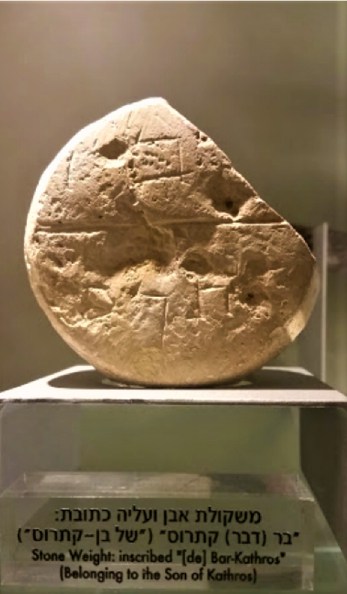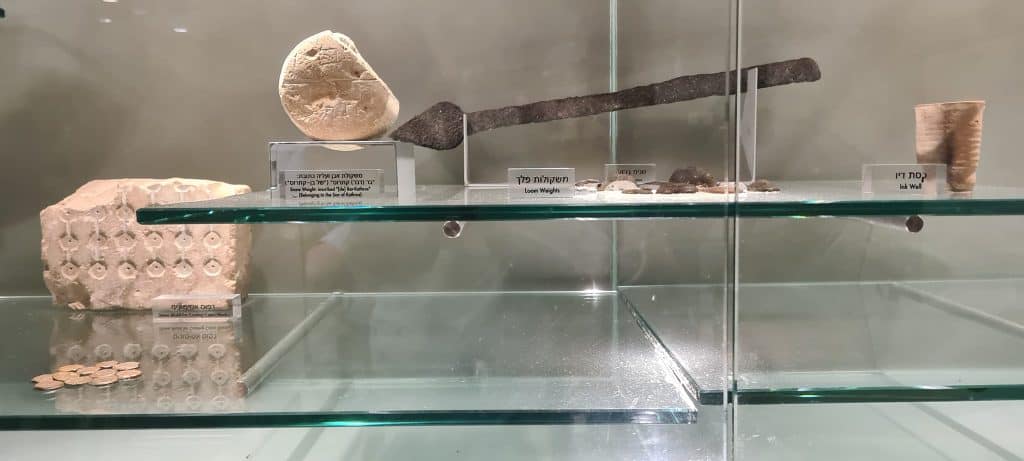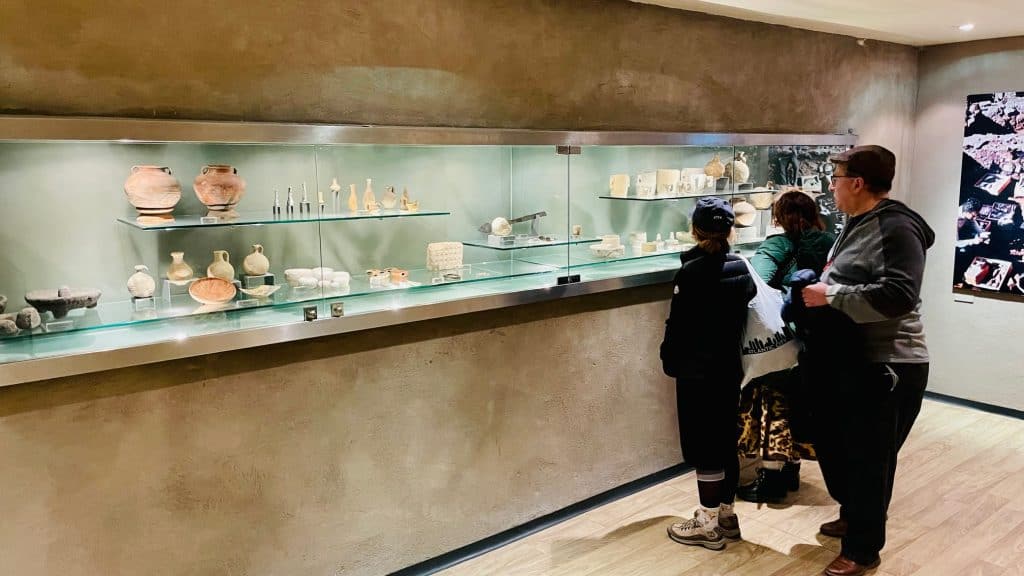The Burnt House (Katros House) is believed to have been set on fire during the Roman destruction of Jerusalem in 70 CE. According to Josephus, Jerusalem’s Upper City was known for its wealth. It was located close to the Temple and inhabited by priestly families who served in the temple. The house was destroyed one month after the Temple and Lower City. When the Romans stormed the Upper City, they found little resistance: Much of the population was near death from disease and starvation.

The Burnt House: Archaeological Excavations
Following the 1967 reunification of Jerusalem, the Jewish quarter was rebuilt, and extensive archeological excavations were conducted in the area, headed by Dr Nahman Avigad. In 1970 one of the findings of the Avigad excavations was the Burnt House, which was found under a layer of ashes and destruction, indicating that the house had been burned down. The house is only part of a large complex, which could not be fully excavated and still lies under the Jewish Quarter. Coins were found in the house issued by the Roman governors of Judea and those issued by the Jewish rebels in 67–69 CE, and none that were later than that, indicating that the house was burned down at the end of this time.

In the photo above this stone weight was one of many finds made at the “Burnt House”; all evidence of a wealthy family of Jewish priests (the Katros family) who resided here up until the Roman destruction of Jerusalem in 70 CE. Furthermore, In 2012 a similar incised stone weight was found nearby, under the “Tiferert Israel” synagogue, indicating that the original full inscription was “50(shekels of the) sons (=family) of Katros”.
The Rooms and Outline of the House
The ground floor of the Burnt House was exposed to reveal a house with an area of about 55 (32 ft) square. It included a small courtyard, four rooms, a kitchen, and a mikvah (ritual bath). The walls of the house, built of stones and cement and covered with a thick white plaster, were preserved to a height of about one meter. In the beaten-earth floors of the rooms were the hollow bases of round ovens made of brown clay, indicating perhaps that this wing of the house was used as a workshop.
The house’s courtyard was paved with stone; through it, one reached the kitchen and the other rooms. Three were medium-sized, and a fourth, a side room, was tiny. The very small mikvah is covered with gray plaster and has four steps descending to its bottom. In the kitchen corner were a stove, basalt grinding stones next to it, and a large stone tray. Several stone jars were also found in the kitchen. The occupants probably used heavy stone kitchenware rather than pottery because, according to Halacha, they do not contract ritual impurity. This suggests the occupants were a priestly family who had to maintain their cleanness to work at the temple. The presence of the mikvah also indicates this.

The Burnt House: Conflagration Traces
Throughout the house are stones burnt by an intense fire, scorched wooden beams, and layers of ash and soot testify to the enormous fire raging there. Its walls and wood-beamed ceilings collapsed in a conflagration, sealing many diverse objects in its rooms. And scattered in disarray among the collapsed walls, ceilings, and the second story, were fragments of stone tables and many ceramic, stone, and metal vessels, iron nails found in ruins are all that was left of the wooden roof, the shelves, and furnishings which were wholly burnt.
Also found were inkwells, Roman-period oil lamps used to light up the house during the evenings, and other household items, such as the giant jugs, bowls, and measuring cups, indicating that this was a perfume production workshop.[citation needed] Leaning against a corner of a room was an iron spear, which may have belonged to one of the Jewish fighters who lived here.
The Burnt Hous: Human Remains
In the room identified as the kitchen, the forearm bones from the fingertip to the elbow joint of a woman approximately 25 years old were discovered. Since the bone is almost certainly that of a Jewish woman, it was buried by Jewish law, but pictures of the findings are on display. Also found in the house was a round stone weight, 10 cm in diameter; on it, in the square Aramaic script, was the Hebrew inscription (of) “Bar Kathros,” meaning the “son of Kathros”; this indicating that the house belonged to the Katros family. According to the Talmud, the Kathros family was a priestly family that had abused its position in the Temple. The Talmud describes them in Pesahim 57A in a poem that lists the priestly families that abused their positions in the temple.
The Burnt House: The Museum
The excavated house is open to the public, and its artifacts are on display in the small museum near the room. The 12-minute audio-visual presentation, set up inside the house, plays back the nearly 2,000-year-old events: the preparations of the revolt against the Romans, the different political opinions of the family members, news on the approaching Roman Legions, the destruction of the temple, the storming of both the city and the house, then ending with the torching of the house.







